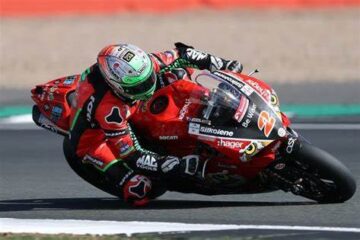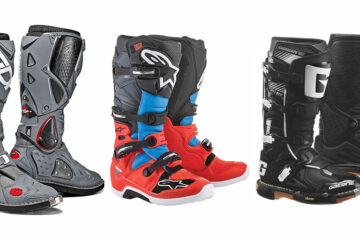Riding a sports bike is a thrilling experience, offering unparalleled speed, agility, and precision on the road. However, unlike standard motorcycles or cruisers, sports bikes are designed for high-performance riding, and mastering them requires specialized skills. From handling at high speeds to advanced braking techniques, sports bike riders must be proficient in a variety of areas to ensure both safety and an enjoyable riding experience.
Here’s why sports bike riding requires special skills and how you can develop these abilities to maximize your performance on the road.
1. High-Speed Control
Sports bikes are engineered for speed, with powerful engines and lightweight frames that allow for rapid acceleration and high top speeds. While exhilarating, this speed can also be dangerous if not managed properly. Riders need to develop advanced throttle control and precision handling to navigate fast turns and react quickly to road conditions.
Key Skills:
- Throttle control for smooth acceleration and deceleration
- Precise handling at high speeds
- Advanced cornering techniques for fast turns
Why It’s Important:
At high speeds, even minor inputs can dramatically affect the bike’s behavior. Riders need to be able to maintain control, especially when entering and exiting turns or when riding in traffic.

Why Sports Bike Riding Requires Special Skills
2. Enhanced Braking Techniques
Due to the speeds sports bikes can reach, stopping distances are often longer, and braking requires greater precision. Simply relying on the front brake can cause the bike to nose-dive, while overusing the rear brake can lead to skidding. Sports bike riders need to master advanced braking techniques, such as trail braking and progressive braking, to ensure smooth, controlled stops.
Key Skills:
- Balanced use of front and rear brakes
- Trail braking through corners
- Progressive braking for smooth deceleration
Why It’s Important:
Efficient braking is crucial for avoiding accidents, especially when riding at high speeds or in emergency situations. Incorrect braking can cause a loss of control, increasing the risk of a crash.
3. Advanced Cornering Ability
One of the most exciting aspects of sports bike riding is the ability to lean into corners, carving through turns with precision. However, cornering on a sports bike is far different from cornering on a cruiser or a standard motorcycle. Due to the bike’s sharp handling and light frame, riders must master the art of counter-steering and body positioning to maintain balance and stability through sharp turns.
Key Skills:
- Proper body positioning (leaning with the bike)
- Counter-steering for fast, tight turns
- Maintaining throttle through corners
Why It’s Important:
Cornering is where many accidents happen, especially for inexperienced riders. Proper cornering techniques help maintain control and stability while reducing the chances of skidding or running wide.
4. Body Positioning and Weight Distribution
Sports bikes require riders to adopt a more aggressive riding posture compared to other types of motorcycles. The forward-leaning position helps reduce drag and improve aerodynamics, but it also puts more strain on the rider’s arms, wrists, and core muscles. Riders must learn how to shift their body weight during cornering and braking to enhance stability and performance.
Key Skills:
- Maintaining a forward-leaning posture
- Shifting body weight for improved balance
- Using core muscles for better control
Why It’s Important:
Proper body positioning not only enhances aerodynamics but also aids in controlling the bike during acceleration, cornering, and braking. Incorrect posture can lead to fatigue and loss of control, especially on long rides.
5. Reaction Time and Focus
Sports bike riding demands a heightened level of concentration and faster reaction times. The combination of speed, agility, and the need to quickly assess and respond to changing road conditions means that riders must remain focused at all times. Distractions or delayed reactions can lead to serious accidents, especially on challenging roads or in heavy traffic.
Key Skills:
- Staying focused and alert during rides
- Quick decision-making in high-pressure situations
- Anticipating road conditions and hazards
Why It’s Important:
The margin for error is much smaller when riding a sports bike at high speeds. Quick reflexes and sharp focus are essential for avoiding accidents and making split-second decisions.
6. Handling Sports Bike Technology
Many modern sports bikes come equipped with advanced technologies, including traction control, anti-lock braking systems (ABS), quick shifters, and riding modes. While these technologies enhance safety and performance, they also require riders to understand how to use them effectively.
Key Skills:
- Understanding and utilizing riding modes (e.g., Sport, Rain)
- Using traction control and ABS for safer riding
- Leveraging quick shifters for smoother gear transitions
Why It’s Important:
These features can greatly improve your riding experience, but only if you know how to use them properly. Misusing or misunderstanding advanced tech features can lead to decreased performance or even accidents.
7. Adapting to Different Road Conditions
Sports bikes perform best on smooth, well-paved roads, but riders will often encounter various types of terrain, from wet roads to gravel or uneven surfaces. Navigating these conditions on a sports bike requires a different approach compared to standard motorcycles, as the bikes are less forgiving due to their lightweight frames and stiff suspension.
Key Skills:
- Adjusting riding techniques for wet or slippery roads
- Navigating rough or uneven terrain with care
- Maintaining control on loose gravel or debris
Why It’s Important:
Understanding how to adapt to changing road conditions can prevent accidents and improve overall riding safety. Riding confidently in all conditions will also enhance your overall riding experience.
Conclusion
Riding a sports bike is more than just hopping on and speeding away—it’s an art that requires a unique set of skills. From mastering high-speed control to understanding advanced braking techniques and body positioning, sports bike riders must be prepared to handle the demands of these high-performance machines. With the right training, practice, and focus, you can develop the necessary skills to enjoy safe and exhilarating rides on your sports bike.


